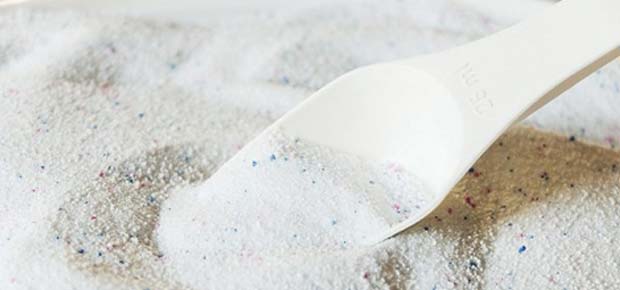To know what is required to achieve effective cleaning, it is necessary to have a basic understanding of the chemistry of soaps and detergents.
Water, the liquid, which is primarily used for cleaning, has a characteristic known as surface tension. Under the surface of water, each water molecule is surrounded and attracted by other molecules. At the surface, however, these molecules are surrounded by only those water molecules that are on the water side. As the water molecules at the surface are pulled inside the body of water, a tension is created. This tension makes the water to bead up on surfaces (fabric, glass), as a result of which the wetting of surface and hence the cleaning process slows down.
For effective cleaning, the surface tension should be reduced in order to make water spread and wet surfaces. Chemicals that can do this effectively are known as surfactants or surface-active agents.
Surfactants also execute some other important cleaning functions, such as loosening, emulsifying (dispersing in water) and holding the soil in suspension till the time it can be rinsed away. These chemicals also provide alkalinity that has found to be effective in removing acidic soils.

Also known as surface-active agents, surfactants can also be classified on the basis of their ionic (electrical charge), anionic (negative charge), nonionic (no charge), cationic (positive charge) and amphoteric (either positive or negative charge) properties in water.
Soap is an anionic surfactant while main ingredients in todays' detergents are other anionic as well as nonionic surfactants. Now lets have a look at the chemistry of surfactants -
Soaps are water-soluble potassium or sodium salts of fatty acids, which are made by the chemical treatment of fats (or oils), or their fatty acids with a strong alkali. Now let us first examine the composition of fats, oils and alkalis.
Fats and oils that are used in the manufacturing of soaps come from plant or animal sources. Each fat or oil molecule is made up of a typical mixture of different triglycerides.
In a triglyceride molecule, one glycerin molecule is attached to three molecules of a fatty acid. There are several types of fatty acids, with each having a particular combination of fatty acids. Components of fats and oils, which are used in soap making, fatty acids are weak acids that are composed of two parts.
A carboxylic acid group consists of two oxygen (O) atoms, one carbon (C) and one hydrogen (H) atom with a hydrocarbon chain attached to the carboxylic acid group. Typically, a fatty acid is made up of a long straight chain of carbon (C) atoms in which each carbon atom carries two hydrogen atoms.
An alkali is a soluble salt of an alkali metal, such as potassium or sodium. Earlier, the alkalis that were used in soap manufacturing were obtained from the ashes of plants but now they are commercially manufactured. Now days, the term alkali described a substance, which is a base (chemically) and that reacts with and neutralizes an acid.
Usually the alkalis that are used in soapmaking are potassium hydroxide (KOH), also known as potash (KOH) and sodium hydroxide (NaOH), also known as caustic soda.
A detergent is a better cleaning product as it contains one or more surfactants. Due to their chemical makeup, the surfactants that are used in detergents can be engineered to function well under different conditions. Such types of surfactants are less sensitive to hardness minerals in water than soap and most of them do not form a film.
Detergent surfactants were developed during World War I in response to a shortage of animal and vegetable fats and oils. The discovery of surfactant was also driven by the need of a cleaning product resistant to hard water to make the cleaning more effective. At that time, petroleum was found to be a readily available source for the manufacture of detergent surfactants. Today, detergent surfactants can be produced with a variety oleochemicals (derived from fats and oils) and/or petrochemicals (derived from petroleum). Now let us first examine the composition of petrochemicals, oleochemicals and alkalis prior to the review of how surfactant detergents work.
Like the fatty acids that are used in soap manufacturing, both the petroleum and fats and oils contain hydrocarbon chains, which are repelled by water but attracted to grease and oils in soils. The hydrocarbon chain sources are used to form the water-repelling end of the surfactant molecule.
Other chemicals include chemicals, like sulfur trioxide, sulfuric acid and ethylene oxide, that can be used to produce the water-attracting end of the surfactant molecule.
As like soapmaking, an alkali is used to form detergent surfactants. Potassium and sodium hydroxide are the most commonly used alkalis.

If you have decided to make soap at home, you will need soap making supplies in the form of raw materials, soap making equipment & tools ...
Read More
Someone has rightly said that clothes are not just clothes. They form an integral part of a person's personality and tell a lot about their nature and...
Read MoreCleansing products play an important role in the daily lives of people.
Both soaps and detergents are cleansing products that we frequently use in our
Soap is designed as a product to be used once and then flushed down the drain...